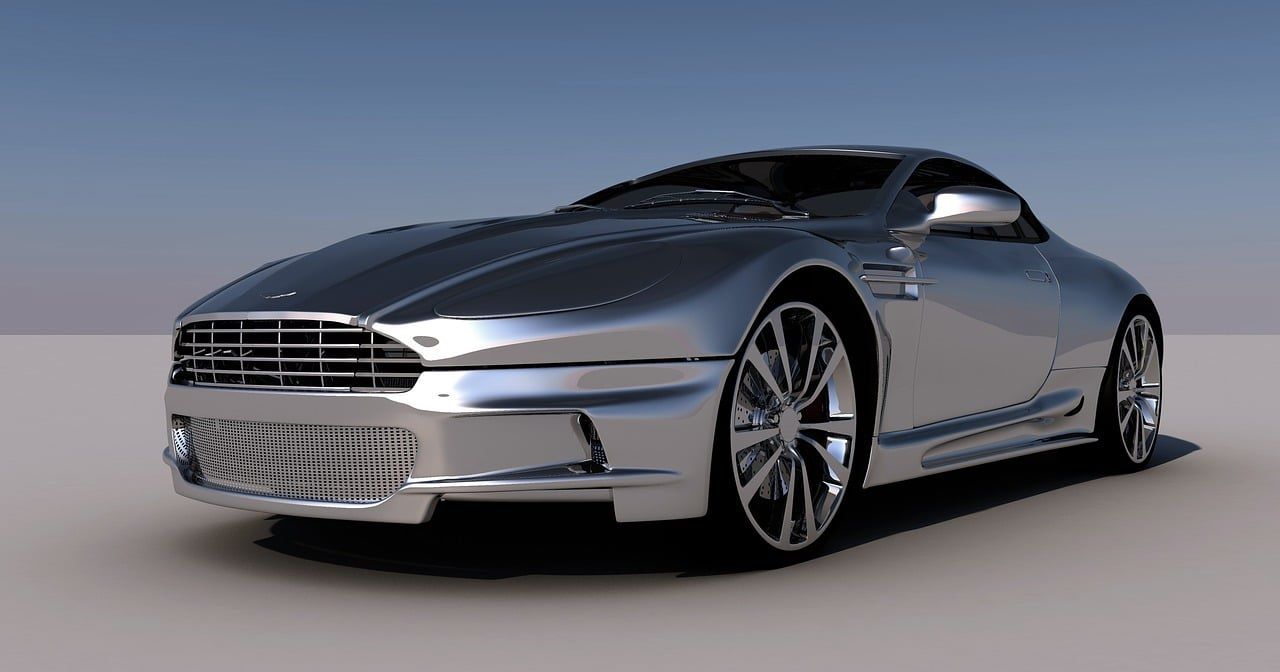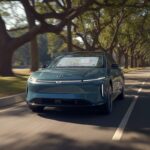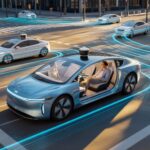
The State of Hydrogen Cars: Navigating the Road Ahead
The automotive industry stands at the cusp of a revolution, with hydrogen fuel cell vehicles (FCVs) positioned as a promising alternative to conventional fossil fuel and battery electric vehicles (BEVs).
This article delves into the current state of hydrogen cars, exploring their advantages, challenges, market presence, and future prospects.
Advantages of Hydrogen Cars
Hydrogen cars offer several compelling benefits that align with global sustainability goals.
Firstly, they produce zero emissions at the point of use; their only byproduct is water vapor, making them an environmentally friendly option.
They also boast fast refueling times, typically under five minutes, which is considerably quicker than charging most BEVs.
Furthermore, hydrogen vehicles offer a longer range compared to many electric cars on the market, addressing range anxiety issues that have plagued the adoption of electric vehicles.
Challenges and Limitations
Despite their advantages, hydrogen cars face significant hurdles.
The production of hydrogen is energy-intensive and not always green; it’s often derived from natural gas, resulting in carbon emissions.
However, there’s a push towards green hydrogen production methods, such as electrolysis powered by renewable energy, although these techniques are not yet widespread or cost-effective.
Another major challenge is the lack of refueling infrastructure.
Hydrogen fueling stations are expensive to build and operate, leading to a sparse network that limits the practicality of hydrogen vehicles for many potential users.
Furthermore, the cost of hydrogen fuel cell technology remains high, making these vehicles more expensive than their gasoline and electric counterparts.
Market Presence and Adoption
The market for hydrogen cars is currently niche, with a few automakers like Toyota, Honda, and Hyundai leading the charge.
Toyota’s Mirai, Honda’s Clarity Fuel Cell, and Hyundai’s Nexo are among the few hydrogen-powered models available.
However, sales have been modest compared to gasoline and electric vehicles, largely due to the aforementioned challenges.
Governments and industry players in regions like California, Japan, and parts of Europe are investing in hydrogen infrastructure to foster a more conducive environment for FCVs.
These regions have introduced incentives for hydrogen car buyers and subsidies for infrastructure development, aiming to increase the adoption rate.
Future Prospects
The future of hydrogen cars hinges on overcoming the challenges of hydrogen production and infrastructure.
Innovations in green hydrogen production and economies of scale could reduce costs and carbon footprints.
Moreover, strategic partnerships and government support are crucial for expanding the refueling network.
As the automotive industry moves towards decarbonization, hydrogen cars could play a significant role, especially in sectors where batteries are less practical, such as heavy-duty trucks and long-distance travel.
The integration of hydrogen in a broader energy ecosystem, including power generation and industrial processes, could further enhance its viability and sustainability.
Hydrogen cars offer a vision of a zero-emission future, with the potential to complement battery electric vehicles in achieving global sustainability goals.
However, this vision requires concerted efforts to address the challenges of hydrogen production, infrastructure, and costs.
With technological advances and increased support from both governments and the private sector, hydrogen could become a key player in the transportation sector’s transition to clean energy.
As the landscape evolves, monitoring developments in hydrogen production, infrastructure expansion, and vehicle offerings will be essential in assessing the long-term viability of hydrogen cars.
Obstacles to wide adoption
The widespread adoption of hydrogen cars faces several obstacles, which can be categorized into four main areas: production challenges, infrastructure limitations, economic factors, and public perception.
Production Challenges:
The most common method of hydrogen production, steam methane reforming (SMR), is not environmentally friendly as it releases significant amounts of CO2.
Although green hydrogen production methods exist, such as water electrolysis using renewable energy sources, they are currently less efficient and more expensive.
Scaling up green hydrogen production to meet automotive demands in a cost-effective and sustainable manner remains a significant challenge.
Infrastructure Limitations:
The hydrogen refueling infrastructure is significantly underdeveloped compared to traditional gasoline stations and electric vehicle charging networks.
Building new hydrogen stations is costly, with estimates running into millions of dollars per station.
This high upfront investment, coupled with the current low demand for hydrogen fuel cell vehicles, discourages the rapid development of refueling infrastructure.
Economic Factors:
Hydrogen fuel cell vehicles are generally more expensive than their gasoline and electric counterparts, both in terms of initial purchase price and operational costs.
This price disparity is due to the high cost of fuel cell production, which involves expensive materials and complex manufacturing processes.
Additionally, the cost of hydrogen fuel, partly due to the inefficient production and distribution system, also contributes to higher operational costs.
Public Perception and Awareness:
There is a lack of awareness and understanding of hydrogen fuel cell technology among the general public.
Misconceptions about the safety of hydrogen (often associated with historical incidents like the Hindenburg disaster) and confusion about the benefits and limitations of hydrogen cars compared to electric vehicles affect consumer interest and acceptance.
Overcoming these obstacles requires concerted efforts from governments, industry stakeholders, and the research community.
Subsidies and incentives could lower the cost barriers, while investment in research could lead to technological breakthroughs that make green hydrogen production more efficient and cost-effective.
Expanding the hydrogen refueling infrastructure and educating the public about the benefits and safety of hydrogen vehicles are also crucial steps towards wider adoption.
The path to widespread adoption of hydrogen cars is complex and fraught with challenges.
However, with ongoing advancements in technology, policy support, and increased environmental awareness, hydrogen has the potential to play a significant role in the future of transportation.
The Future
The future of hydrogen cars, while facing challenges, holds promising potential due to several evolving dynamics in the automotive industry, energy sector, and global environmental policies. Here are key aspects that shape the future outlook:
Technological Advancements
- Efficiency Improvements: Ongoing research aims to increase the efficiency of hydrogen production, storage, and fuel cell technology. Advances in electrolysis, for example, could make green hydrogen more affordable and sustainable.
- Material Innovations: Researchers are exploring new materials for fuel cells that could reduce costs and enhance performance. This includes finding alternatives to expensive catalysts like platinum.
Infrastructure Expansion
- Global Initiatives: Various countries and regions are committing to hydrogen infrastructure development. For instance, the European Union and nations like Japan and South Korea have outlined ambitious hydrogen strategies that include building refueling stations and supporting hydrogen production.
- Private Sector Investments: Major energy and automotive companies are investing in hydrogen infrastructure, betting on its long-term viability. Partnerships between governments and private entities are likely to accelerate infrastructure growth.
Economic and Policy Support
- Government Policies: Subsidies, incentives, and regulations that favor clean energy sources, including hydrogen, are becoming more prevalent. These policies aim to lower the cost barrier for consumers and producers alike.
- Economic Viability: As green hydrogen production scales up, costs are expected to decrease, making hydrogen fuel more competitive with traditional and electric vehicles. The total cost of ownership for hydrogen vehicles is anticipated to decrease as well.
Market Diversification
- Beyond Passenger Cars: The potential of hydrogen extends beyond passenger vehicles to include buses, trucks, and even maritime and aviation applications. Heavy-duty transport, in particular, could benefit significantly from hydrogen’s energy density and refueling speed.
- Energy Sector Integration: Hydrogen is being considered as a storage medium for renewable energy, which could play a crucial role in the broader energy transition. This integration could further drive hydrogen production and utilization.
Public Perception and Awareness
- Increased Awareness: As more hydrogen vehicles enter the market and infrastructure expands, public awareness and acceptance are likely to grow. Educational initiatives and visibility of hydrogen in various sectors can shift perceptions positively.
Challenges to Address
While the future looks promising, the widespread adoption of hydrogen cars still faces significant hurdles, including making green hydrogen production universally economical and expanding the refueling infrastructure to meet demand efficiently.
In summary, the future of hydrogen cars is intricately linked to advancements in technology, supportive policies, economic factors, and the broader shift towards sustainable energy sources. If these elements align, hydrogen could play a pivotal role in the transition to a zero-emissions transportation sector.


